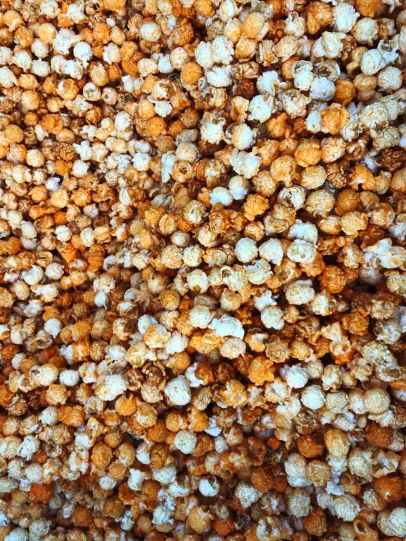Hot Buttered History
People seem to be reaching for the popcorn more than ever these days – but they’ve actually been snacking on this treat for a long time, according to the Popcorn Board. The oldest ears of popcorn, discovered in the Bat Cave of New Mexico, were estimated to be about 4,000 years old. Popcorn was part of Aztec Indian ceremonies during the 16th century. In the 1800s, Americans ate ground popcorn with milk as a breakfast cereal. Kettle corn, the sweet-and-salty snack, first made its appearance at county fairs. In the 1890s, mass consumption of popcorn exploded when a Chicago entrepreneur built the first popcorn-popping machine.
The snack grew in popularity during the Depression because it was affordable and became available at movie theaters. Sales dropped with the advent of TV in the 1950s, but rebounded in the 1980s when microwave popcorn came into the marketplace. Today, Americans eat 13 billion quarts of popped popcorn each year.
Popcorn – one of four types of corn, unique in its size, shape, starch level, moisture content and popability – is primarily grown in Nebraska and Indiana. The other types are sweet corn (corn on the cob), sweet and tender, grown in South Florida; flint corn, also known as Indian corn, grown mainly in Central and South American in a wide range of colors and used for decoration at harvest time; and dent corn, also known as field corn, used for livestock feed. The two types of popping corn are butterfly, typical microwave popcorn, because it has wings when it pops; and mushroom, which pops round, with a sturdy surface to pick up kettle corn glaze or caramel.
When it’s not drenched in butter or covered in caramel, popcorn is considered a healthy snack, and good for diabetics because it doesn’t impact blood sugar levels. It’s a whole grain that’s 100 percent unprocessed, with no hidden ingredients or GMOs, relatively high in fiber and containing essential vitamins.





